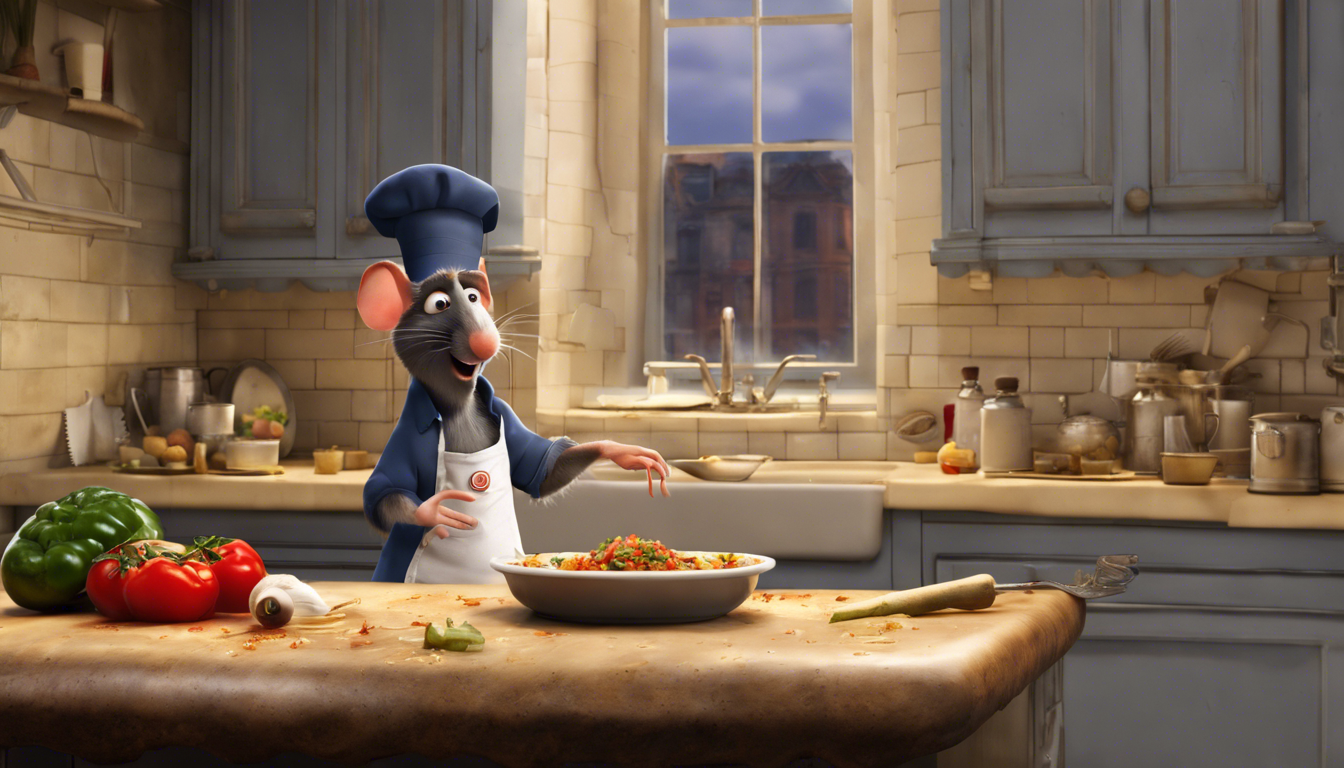
Origins and history
Ratatouille is a traditional French Provençal stewed vegetable dish, originating from Nice. The name “ratatouille” comes from the Occitan word “ratatolha,” which means to stir up. This dish has humble beginnings as a simple, rustic meal for farmers, utilizing the abundant summer vegetables of the region. Over time, it has evolved into a beloved staple of French cuisine, celebrated for its vibrant flavors and versatility.
The earliest versions of ratatouille were likely made by peasants in the 18th century, who would cook a mixture of vegetables together to create a hearty and nutritious meal. The dish was typically prepared with whatever vegetables were on hand, making it an economical and practical choice. As the recipe spread throughout France, it began to take on regional variations, with each area adding its own unique twist.
In the 20th century, ratatouille gained international recognition, thanks in part to the rise of French cuisine on the global stage. Renowned chefs began to refine and elevate the dish, experimenting with different cooking techniques and presentations. Today, ratatouille is enjoyed worldwide, both in its traditional form and in more modern interpretations.
Despite its evolution, the essence of ratatouille remains the same: a celebration of fresh, seasonal vegetables, cooked to perfection. The dish typically includes tomatoes, zucchini, eggplant, bell peppers, onions, and garlic, all simmered together in olive oil. The result is a rich, flavorful stew that can be served as a main course or a side dish, hot or cold.
Ratatouille’s enduring popularity is a testament to its versatility and timeless appeal. Whether enjoyed as a comforting home-cooked meal or a sophisticated restaurant dish, it continues to delight and inspire food lovers around the world.
Ingredients and preparation
To create a delicious ratatouille, you’ll need a selection of fresh, high-quality vegetables. Here is a list of ingredients you’ll need:
- 2 medium-sized eggplants
- 3 medium-sized zucchinis
- 1 large yellow bell pepper
- 1 large red bell pepper
- 1 large green bell pepper
- 4 medium-sized tomatoes
- 1 large onion
- 4 cloves of garlic
- 1/4 cup of extra virgin olive oil
- 1 teaspoon of dried thyme
- 1 teaspoon of dried basil
- 1 teaspoon of dried oregano
- Salt and pepper to taste
- Fresh basil leaves for garnish
Now, let’s move on to the preparation and cooking process:
- Step 1: Prepare the vegetables. Begin by washing all the vegetables thoroughly. Cut the eggplants, zucchinis, and bell peppers into thin slices. Dice the tomatoes and finely chop the onion and garlic.
- Step 2: Sauté the onions and garlic. In a large skillet, heat the olive oil over medium heat. Add the chopped onions and garlic, and sauté until they become translucent and fragrant, about 5 minutes.
- Step 3: Layer the vegetables. In a large baking dish, start layering the sliced vegetables in a circular pattern, alternating between eggplant, zucchini, and bell peppers. Sprinkle the diced tomatoes evenly over the top.
- Step 4: Season the dish. Sprinkle the dried thyme, basil, and oregano over the layered vegetables. Season with salt and pepper to taste. Drizzle a bit more olive oil over the top to ensure the vegetables are well-coated.
- Step 5: Bake the ratatouille. Preheat your oven to 375°F (190°C). Cover the baking dish with aluminum foil and bake for 40 minutes. After 40 minutes, remove the foil and bake for an additional 20 minutes, or until the vegetables are tender and slightly caramelized.
- Step 6: Garnish and serve. Once the ratatouille is done baking, remove it from the oven and let it cool slightly. Garnish with fresh basil leaves before serving. Ratatouille can be enjoyed hot, warm, or even cold, making it a versatile dish for any occasion.
Cooking tips:
- Use fresh, seasonal vegetables. The quality of your ingredients will greatly impact the flavor of your ratatouille. Whenever possible, use vegetables that are in season and locally sourced.
- Don’t rush the cooking process. Allowing the vegetables to cook slowly and evenly will help develop their flavors and ensure a tender, delicious dish.
- Experiment with herbs and spices. While the traditional recipe calls for thyme, basil, and oregano, feel free to experiment with other herbs and spices to suit your taste preferences.
- Make it ahead of time. Ratatouille often tastes even better the next day, as the flavors have more time to meld together. Consider making it a day in advance and reheating it before serving.
Cultural significance
Ratatouille holds a special place in French culture, symbolizing the essence of Provençal cuisine and the celebration of fresh, seasonal produce. This dish is more than just a meal; it is a representation of the region’s agricultural heritage and the simplicity of rural life. In Provence, the preparation of ratatouille is often a communal activity, bringing families and friends together to share in the joy of cooking and eating.
In French households, ratatouille is a staple, often served as a main course with crusty bread or as a side dish accompanying meats and fish. Its versatility makes it a favorite for both casual family dinners and festive gatherings. The dish’s vibrant colors and rich flavors also make it a popular choice for special occasions and celebrations, where it is appreciated not only for its taste but also for its visual appeal.
Beyond the home kitchen, ratatouille has made its mark in the culinary world, featured in restaurants ranging from quaint bistros to high-end establishments. Chefs often put their own spin on the traditional recipe, incorporating modern techniques and presentations while staying true to the dish’s rustic roots. This blend of tradition and innovation has helped ratatouille maintain its relevance and popularity in contemporary cuisine.
Ratatouille’s cultural significance extends beyond France, as it has become an emblem of Mediterranean cuisine worldwide. Its emphasis on fresh vegetables and simple preparation aligns with the principles of healthy eating and the farm-to-table movement, resonating with food enthusiasts and health-conscious individuals alike. The dish’s international fame was further cemented by the 2007 animated film “Ratatouille,” which introduced it to a global audience and highlighted the artistry and passion involved in its creation.
In essence, ratatouille is more than just a dish; it is a culinary tradition that embodies the spirit of Provence and the joy of cooking with fresh, seasonal ingredients. Its enduring appeal lies in its ability to bring people together, whether through the shared experience of preparing it or the communal enjoyment of its delicious flavors.
